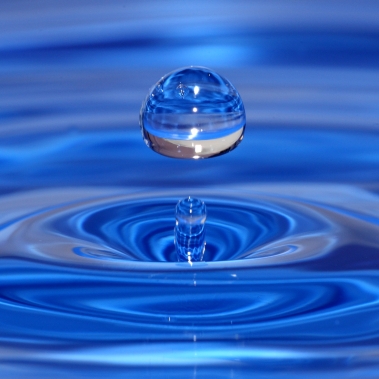Water has many unique characteristics which make life possible on earth and support it. One of these properties is water’s high specific heat, or water’s  ability to resist changing temperatures. In terms of water’s chemical nature this is possible because of the large amount of energy which would be needed to break the hydrogen bonds which hold the water molecules together. In terms of its physical nature water’s high specific heat water is able to absorb large amounts of energy from the sun’s heat. An example of how water’s high specific heat affects life is that during the winter time air passes over and absorbs the heat of the water resulting in warmer air hitting land. Another property of water is its density or the distribution of its mass per a given area. In terms of its physical nature this allows for water in liquid form to have a density of 1 g/mL and in solid form to have a density of .96 g/mL. Water is one of the few substances where the solid is less dense than the liquid. In terms of water’s chemical and physical nature this means that water’s hydrogen bonds keep the molecules further apart when the water freezes. In turn this supports life because it allows for floating ice to cover and protect aquatic ecosystems. The final characteristic is water’s high heat of vaporization, or the high temperature water needs to reach before it can boil and turn into a gas. In terms of its chemical nature this is because it takes a lot of energy to convert liquid water into gas. This characteristic supports life because it allows for some organisms to sweat or pant in order to cool off when it is too hot.
ability to resist changing temperatures. In terms of water’s chemical nature this is possible because of the large amount of energy which would be needed to break the hydrogen bonds which hold the water molecules together. In terms of its physical nature water’s high specific heat water is able to absorb large amounts of energy from the sun’s heat. An example of how water’s high specific heat affects life is that during the winter time air passes over and absorbs the heat of the water resulting in warmer air hitting land. Another property of water is its density or the distribution of its mass per a given area. In terms of its physical nature this allows for water in liquid form to have a density of 1 g/mL and in solid form to have a density of .96 g/mL. Water is one of the few substances where the solid is less dense than the liquid. In terms of water’s chemical and physical nature this means that water’s hydrogen bonds keep the molecules further apart when the water freezes. In turn this supports life because it allows for floating ice to cover and protect aquatic ecosystems. The final characteristic is water’s high heat of vaporization, or the high temperature water needs to reach before it can boil and turn into a gas. In terms of its chemical nature this is because it takes a lot of energy to convert liquid water into gas. This characteristic supports life because it allows for some organisms to sweat or pant in order to cool off when it is too hot.
Hydrogen bonds and hydrophobic interactions each play an important role in stabilizing and organizing biological macromolecules. Within carbohydrates hydrogen bonding is evident in the hydroxyl group because of its potential to have both donor and acceptor properties. The hydrogen bonding in carbohydrates results in the carbohydrates having increased boiling and melting points and their form containing one or more hydroxyl group. If the hydrogen bonds were disrupted it would change both the form and function of the carbohydrate. In proteins hydrogen bonding is only present in the tertiary and quaternary structures in order to provide stability. If removed it would result in the protein becoming destabilized and possibly breaking apart into amino groups. Hydrophobic interactions cause proteins to fold in specific shapes which effect both their form and function. In lipids hydrogen bonds are not evident and therefore don’t affect their form or function. Hydrophobic interactions on the other hand are important within amphiphilic phospholipids because they prevent the internal aqueous environment of a cell from mixing with external water. In nucleic acids hydrogen bonds are used to bond the base pairs of adenine and thymine (or uracil) as well as cytosine and guanine. The hydrogen bonds greatly affect both the function and form of DNA and RNA and therefore would be disrupted if their hydrogen bonds were. Hydrophobic interactions are not evident in nucleic acids and therefore don’t have any effect on their form or function.
